For thousands of years the Cahuilla lived in what would become Southern California. It is not known when the Cahuilla had their first contact with the European explorers/invaders. In 1540, the Spanish explorers Hernando de Alarcón and Melchor Díaz reached the area near present-day Yuma, Arizona. The Spanish had sailed up the Gulf of California looking for the legendary great river that would take them to Cibola where gold was plentiful. They found the Colorado River and then, using two launches, went upstream to the site of present-day Yuma.
With regard to contact with the Indians, Dennis Reinhartz and Oakah Jones, in their chapter in North American Exploration, report:
“On the way up the river, they often met with stiff resistance from Indians who came to see Alarcón as a sorcerer because he claimed to have been sent by the Sun and because of his demonstrations of the use of gunpowder.”
From the Yuma area, Díaz then traveled west of the Colorado River for four days. This journey probably brought him into Cahuilla territory, but there is no Spanish record of contact with the Cahuilla Indians. The Spanish then returned south after erecting a large cross.
In 1769, Father Junípero Serra led a group of Franciscan friars from Baja California to establish a series of 21 missions, starting with San Diego de Alcalá in the south. The group was accompanied by a column of Spanish soldiers under the leadership of Captain Gaspar de Portolá. The missions and their Spanish soldiers would change the lives of the Native peoples of California, including the Cahuilla.
Indian people did not come joyously or freely to live and work at the new missions. In his book Where the Lightning Strikes: The Lives of American Indian Sacred Places, Peter Nabokov writes:
“Soldiers snatched Indian families from outlying hamlets to convert them, change their social habits and turn them into an American peasantry.”
The Indian response to the missions was to flee, either in small groups or in large groups.
The Franciscan missions were slave plantations, requiring the Indian people to work for the Spanish under cruel conditions. Within the California missions, the Indians lived in a nonmarket economy in which they exchanged their labor for food, clothing, and housing. The Indians were taught European-style agriculture and cattle ranching, leatherworking, carpentry, masonry, and other skills which the Spaniards found useful. By using Indian labor to produce surplus grain supplies for the Spanish military garrisons, the Franciscan missionaries were able to view Indians as both potential converts and labor.
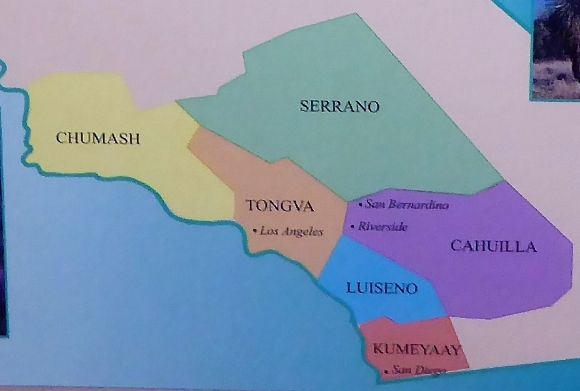 The map shown above shows the territories of the six Southern California Indian nations.
The map shown above shows the territories of the six Southern California Indian nations.
The Cahuilla Continuum was an exhibit at the Riverside Metropolitan Museum authored and curated by Sean C. Milanovich. The exhibit told the story of the Cahuilla from creation to the present day. One of the displays was entitled “Mú Wih Témal (Between Two Worlds)”.
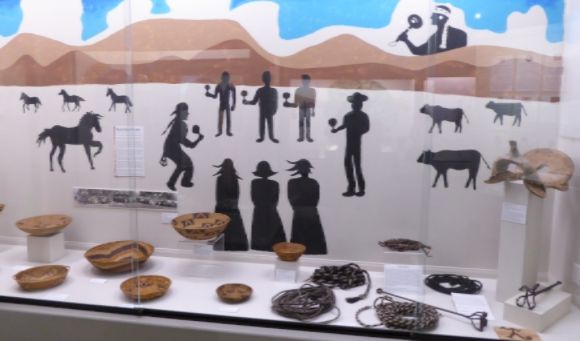
 Shown above is an Indian-made wooden saddle tree (néwagal) made in the late nineteenth or early twentieth century.
Shown above is an Indian-made wooden saddle tree (néwagal) made in the late nineteenth or early twentieth century. 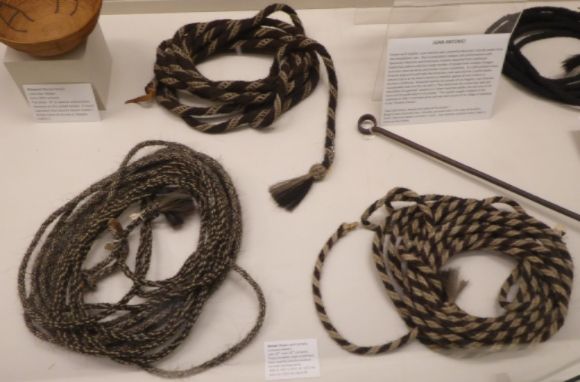 Shown above are some horsehair ropes and lariats (wánal) made in the late nineteenth and early twentieth centuries. The Spanish missions introduce cattle ranching to the Cahuilla.
Shown above are some horsehair ropes and lariats (wánal) made in the late nineteenth and early twentieth centuries. The Spanish missions introduce cattle ranching to the Cahuilla. 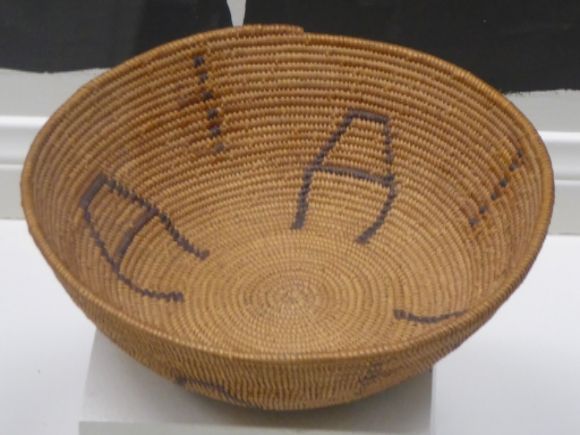 Shown above is a basket bowl (kávamal) from the early twentieth century. The Cahuilla maker is unknown. The letter “A” used as a decorative element could represent the Cahuilla basket maker’s family name.
Shown above is a basket bowl (kávamal) from the early twentieth century. The Cahuilla maker is unknown. The letter “A” used as a decorative element could represent the Cahuilla basket maker’s family name. 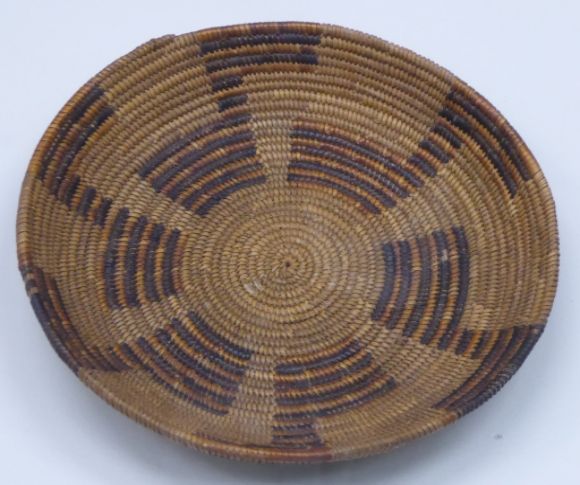 Shown above is a basket bowl (kávamal) from 1900-1915. The Cahuilla maker is unknown.
Shown above is a basket bowl (kávamal) from 1900-1915. The Cahuilla maker is unknown. 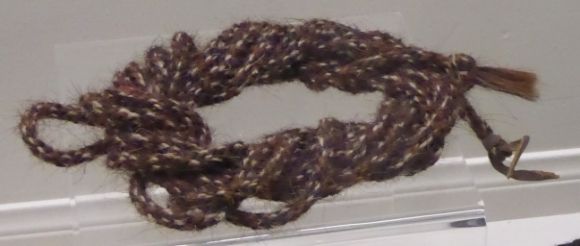 Shown above is another horsehair rope.
Shown above is another horsehair rope. 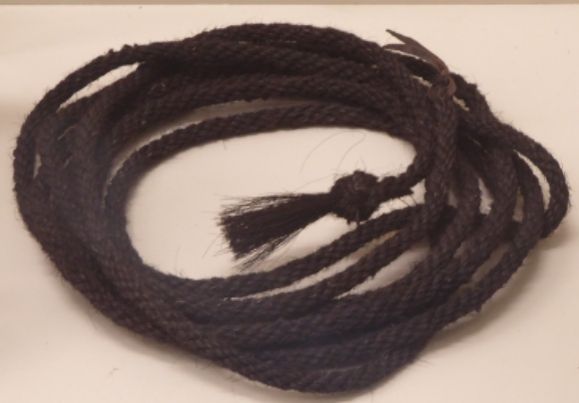 Shown above is another horsehair rope.
Shown above is another horsehair rope.  Shown above is a basket bowl (kávamal) from about 1890. The Cahuilla maker is unknown. The basket design is a spiraling rainbow in a whirlwind.
Shown above is a basket bowl (kávamal) from about 1890. The Cahuilla maker is unknown. The basket design is a spiraling rainbow in a whirlwind. 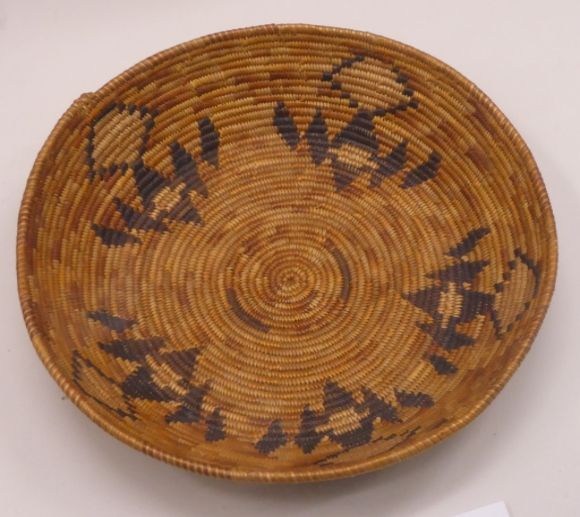 Shown above is a basket bowl (kávamal) from 1895-1915. The Cahuilla maker is unknown. The design represents balance or harmony.
Shown above is a basket bowl (kávamal) from 1895-1915. The Cahuilla maker is unknown. The design represents balance or harmony. 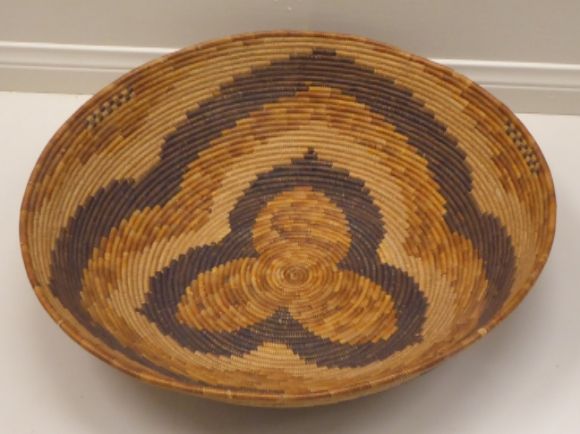 Shown above is a leaching basket (páchika’va’al) made about 1900. This type of basket was used for leaching the tannins from acorn meal.
Shown above is a leaching basket (páchika’va’al) made about 1900. This type of basket was used for leaching the tannins from acorn meal. 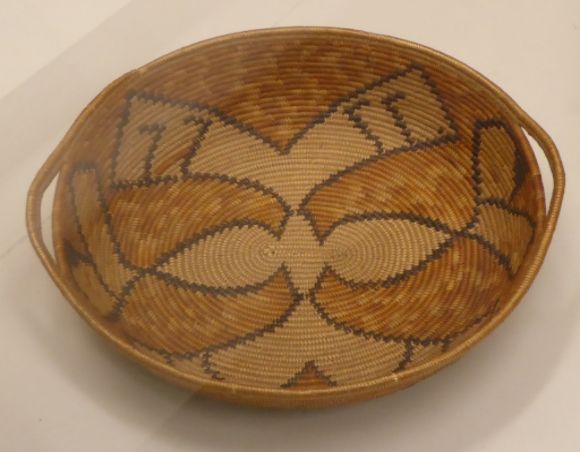 Shown above is a basket serving tray (kávashmal) made the in the early twentieth century. The maker is believed to be Felicité Tortes Mayer from the Santa Rosa Reservation. The handles on this basket are not traditional and may indicate that it was made for sale.
Shown above is a basket serving tray (kávashmal) made the in the early twentieth century. The maker is believed to be Felicité Tortes Mayer from the Santa Rosa Reservation. The handles on this basket are not traditional and may indicate that it was made for sale. 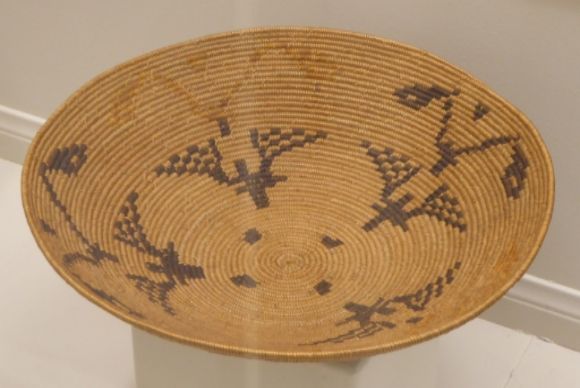 Shown above is a basket bowl (kávamal) from 1900-1910. The Cahuilla maker is unknown. The design shows four trees with bird forms in each tree.
Shown above is a basket bowl (kávamal) from 1900-1910. The Cahuilla maker is unknown. The design shows four trees with bird forms in each tree.  The oval basket with handle shown above was made before 1911. The handle indicates that it was made for sale.
The oval basket with handle shown above was made before 1911. The handle indicates that it was made for sale.  Shown above is a basket tray (kávashmal) made the in the early twentieth century. The Cahuilla maker is unknown.
Shown above is a basket tray (kávashmal) made the in the early twentieth century. The Cahuilla maker is unknown.
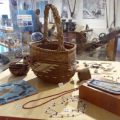
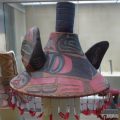
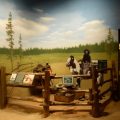
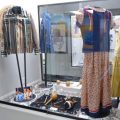
Leave a Reply